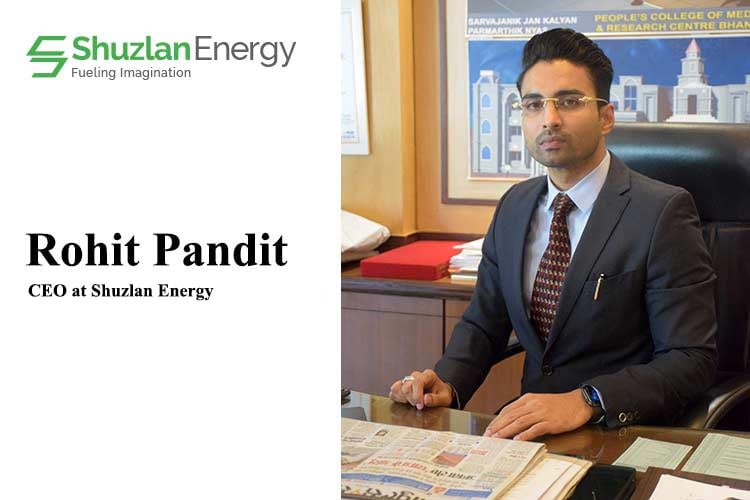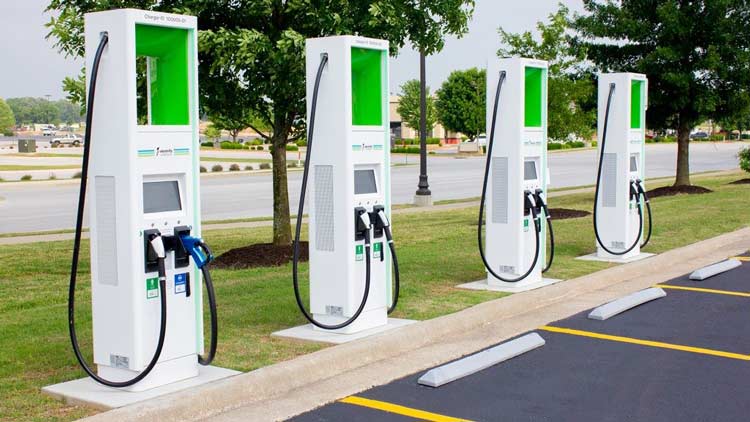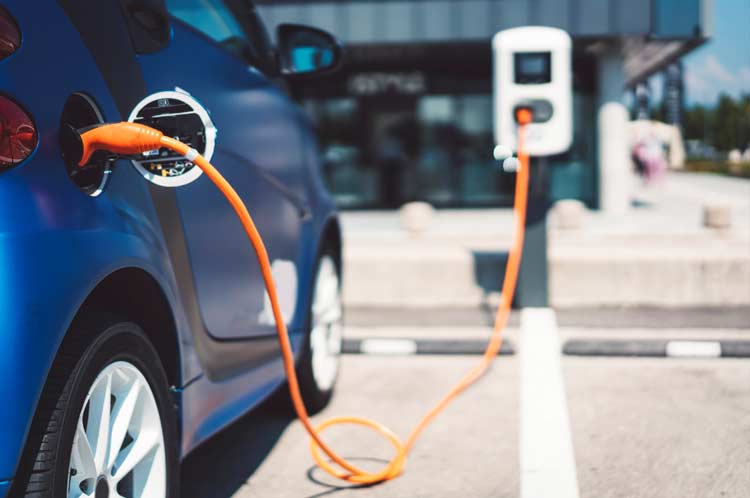
The electric vehicle ecosystem has been growing in India tremendously over the past few years owing to various schemes and initiatives unleashed by the government. But, in our country, charging infrastructure is not growing upto the expectations. The lack of convenient and wide range of charging networks makes it very intricate for EV owners, especially for those living in apartments or without a proper parking area. The EV infrastructure is spearheaded by the policies, incentives, subsidies, and schemes that the government of India has been coming up with. Now, in the Paris Agreement, India has made certain commitments, which need to be fulfilled by 2030. For instance, the PLI and the FAME schemes have helped the country in boosting the sales of EV vehicles. In this regard, we spoke to Rohit Pandit, CEO at Shuzlan Energy, about current growth of electric vehicle infrastructure in India, overview of electric vehicle adoption in India and the progress it has made, both in terms of technology and affordability, and various other aspects.
Q. Can you please highlight the current growth of electric vehicle infrastructure in India? Also, kindly elucidate the difference in growth compared to other countries.
If you look at the sales year-on-year basis, it has increased by 155 percent in 2023. The sales were initially led by electric buses and also the two wheelers and three wheelers, which is the last mile delivery. The four wheeler segment is yet to see that kind of sales. Various companies are coming up with new range of EV cars, which will be launched this year and the next year. So, I am sure all the schemes and incentives will reflect in the coming years in terms of sales, especially if we are also going to build up the charging infrastructure, which we are lacking right now mostly in the rural and suburban regions. Therefore, there could be a public private partnership, which can be worked on.
When we talk about other countries I am sure China and Norway are leading in the front because all these countries have started boosting and manufacturing EVs much earlier before when we started. Therefore, the speed and scale at which they have been able to implement the charging infrastructure is the key for any country to grow in terms of the electric vehicles segment. For instance, there is a new policy in Central London. There are green zones in the area and therefore, when people go there and drive traditional ICE vehicles, they will have to pay extra taxes. So these kinds of policies even the Indian government might come up with in the near future and we will wait for that. I am sure that we will get there, the only thing is we will have to have an appropriate charging infrastructure in place and only then we can think about all these things.
Q. Please provide us with the current overview of electric vehicle adoption in India and the progress it has made, both in terms of technology and affordability.
When we talk about EV infrastructure and vehicles in India, we are gaining momentum driven by policies like PLI and FAME. But, I am sure we are still lagging behind the targets that are sent by the Niti Ayog. The targets are very high because 80 percent of the buses and 70 percent of two wheelers and three wheelers must be electrical by the end of 2030. I hope we will be able to achieve it in terms of affordability especially when all the other car makers are unleashing their new EV models in this year and the next year. Battery manufacturing has also started in India which is going to give a boost in terms of the production capabilities and also in turn when we achieve higher production capacity, we will be able to achieve efficiency.
In terms of the technology, there are various technologies coming in and when we talk about the charging infrastructure there is obviously we are looking at fast rapidly charging Chargers. Because there is no time for any of the vehicle drivers to stand then you know get it charged for almost 4 to 5 hours. This is where the big challenge is because it is not like going to a petrol pump and getting your cars filled with petrol in just 10 minutes. A couple of foriegn firms have also started investing in India in this space and I think this is how we will be able to get better technology and affordability in the coming years.

Q. The EV industry has grown a lot over the last few years in the country, but there are various obstacles that are still crippling the sector. In your view, what are the grave challenges EV infrastructure companies are facing in India and what are the solutions required?
There were a lot of arguments about the various schemes like FAME and others and the subsidies were only going to the state bodies and not the private players. In the two wheeler’s segment, there has been a lot of debate about the free FAME and if the subsidies were stopped in one go, then the sales in the next few years will be very low. There have been various challenges from the government side and from the manufacturers as well. In terms of policies, there is no coordination by the central and the state government. For instance, if we want to put up a charging station we have to approach the state electricity board who does not have a clarity of what exactly they have to do. They have got the policies, but the SOPs are still not made now. Apart from this, there are various models where the government has come up with tenders. Those tenders have also taken a lot of time. We take up to six months to a year to get one tender floating.
Especially, if we talk about the fleets today, most of them are coming up especially in the metro cities. Certain places need to be allotted for their charging hubs because drivers are not going to take the cars to his house like they do for traditional ICE cars. Therefore, it is the government's responsibility to get a place allotted for these ev fleet operators
Q. Give us a detailed picture on why Shuzlan Energy was founded? What is your current mission and vision?
Shuzlan energy was founded in 2021.During the pandemic, the number of vehicles that were being used on the road were very low and in return we had a very low pollution index in the various metro cities of the country so that is where we thought that EV is one solution which we can look up to. Going ahead, Shuzlan is basically creating the charging infrastructure in the country and helping the EV vehicles to be adopted across sectors. We are very much clear on the solution that we are providing. We are not here to have the highest number of Chargers in the country and neither we are not in that competition at all. We just want to have the highest utilization rate per day on each charger.
We look at a lot of Chargers that have been installed over the past 3-4 years, but the utilization rate has not been very high and the life of a charger is not more than 10 to 12 years. So, when we talk about the first four years or the first five years there has not been very high utilization. I have been talking just next to nil. That is where the whole ROI at the IRR goes down the drain. Our basic solution is that we will come up with Chargers only on the captive model. 80% of the charges that we are going to install are going to be for the fleet operators and the bus operators or take two wheelers and the 3 wheelers last mile. We are creating charging hubs right there in their parking spaces. A captive charging agreement will be done with them and when the vehicles charge they charge their vehicles on our chargers we are going to charge them on a per unit basis. We will have to create strategic locations, say on highways, hotels, state petrol pumps or maybe some big malls on the highways so all the fleet operators when they operate in the city we will have some point where they can stop and charge their vehicles.

Q. What are the various products and solutions you are offering in the industry? Do you wish to highlight any unique solution or services, which would be unleashed soon in the market?
We have a CMS system which is a state of the art solution, which enables us to have for interportability on the other platforms as well. So, we have tied up with various players in the industry, they have their own platforms and we have our own CMS system. Apart from our charging stations, we will have other charging stations also on our cms system and help interoperability and that will enable all our fleet operators to have a consolidated charging network in place. This is one solution that we have come up with. Secondly, as I told you, we have a very unique thing: we are not going to have various charging stations and we will set up where it is actually required. Say we are talking about offices where there are many people who are staying there for almost 8 hours and so, that is where we are going to put up charging stations where they can put up their cars for charging and relax in their offices and work. And while going back they can take their car back because nobody is going to go to a charging station and stand there for at least 1 hour or 2 hour and get their car charged.
Q. Finally, kindly highlight your roadmap in the coming years and what are the changes you are bringing to the industry?
We have already tied up with various bus and fleet operators and we have a plan to install around 750 AC and DC Chargers across the country on a similar captive charging model. Apart from this, we are also coming up with various strategic locations as I mentioned on highways where we will be the first to install around 750 AC and DC chargers, which will be in between the range of 30 KILOWATTS to 40 kilowatts. Shuzlan is also looking to acquire strategic shares in various fleet operating companies or may be bus operating companies where we can have a strategic partnership with them and we will be their partners for providing the charging infrastructure. We will give them an end to end solution on this and they can concentrate on their business of either manufacturing or operating that is what we are here. We also are going to launch our own fleet service on a B2B model for various corporations across the country.

